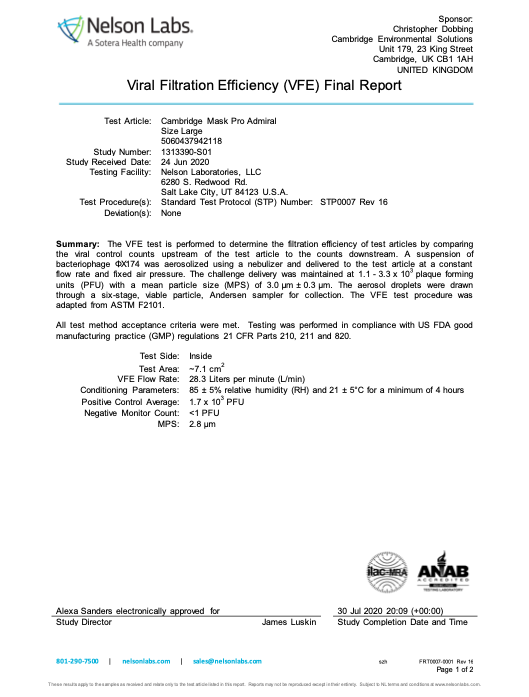What is Viral Filtration Efficiency (VFE), and how is it measured?
Viral Filtration Efficiency (VFE) measures the percentage of viral particles that a mask can block. Essentially, it evaluates the mask’s effectiveness in filtering out airborne viruses. A higher VFE indicates better filtration performance. Our PRO mask boasts an impressive average VFE of 99.86%.
Why are Plaque Forming Units (PFUs) used in VFE testing?
Viruses are extremely small, typically less than a millionth of a meter in size. Due to their microscopic nature, viruses often form plaques, or clusters, that can damage cells. Plaque Forming Units (PFUs) are used as the standard measure in virology to represent these clusters. In VFE testing, the number of PFUs that pass through the mask is counted.
How is the VFE test conducted?
To test VFE, a known quantity of PFUs is suspended in an air mixture to simulate real-life conditions. This mixture is then pulled through the mask at a constant rate for at least four hours. The number of PFUs that pass through the mask is counted, and the VFE is calculated by dividing the number of PFUs that pass through the mask by the initial number used in the air mixture.
If you have further question, please contact us by email at info@cambridgemask.com or Chat button on our sites to connect with our Customer Service Team.

